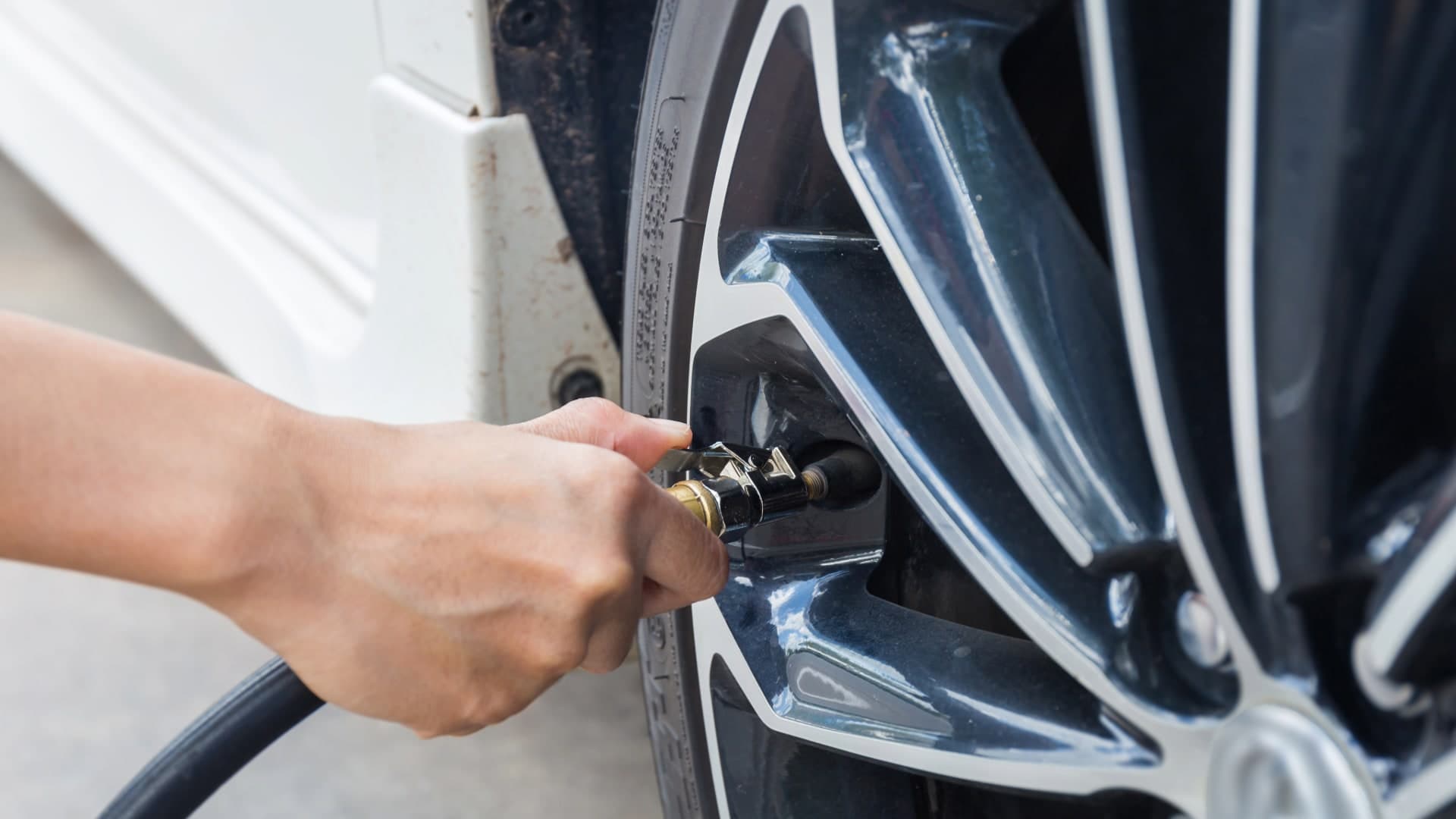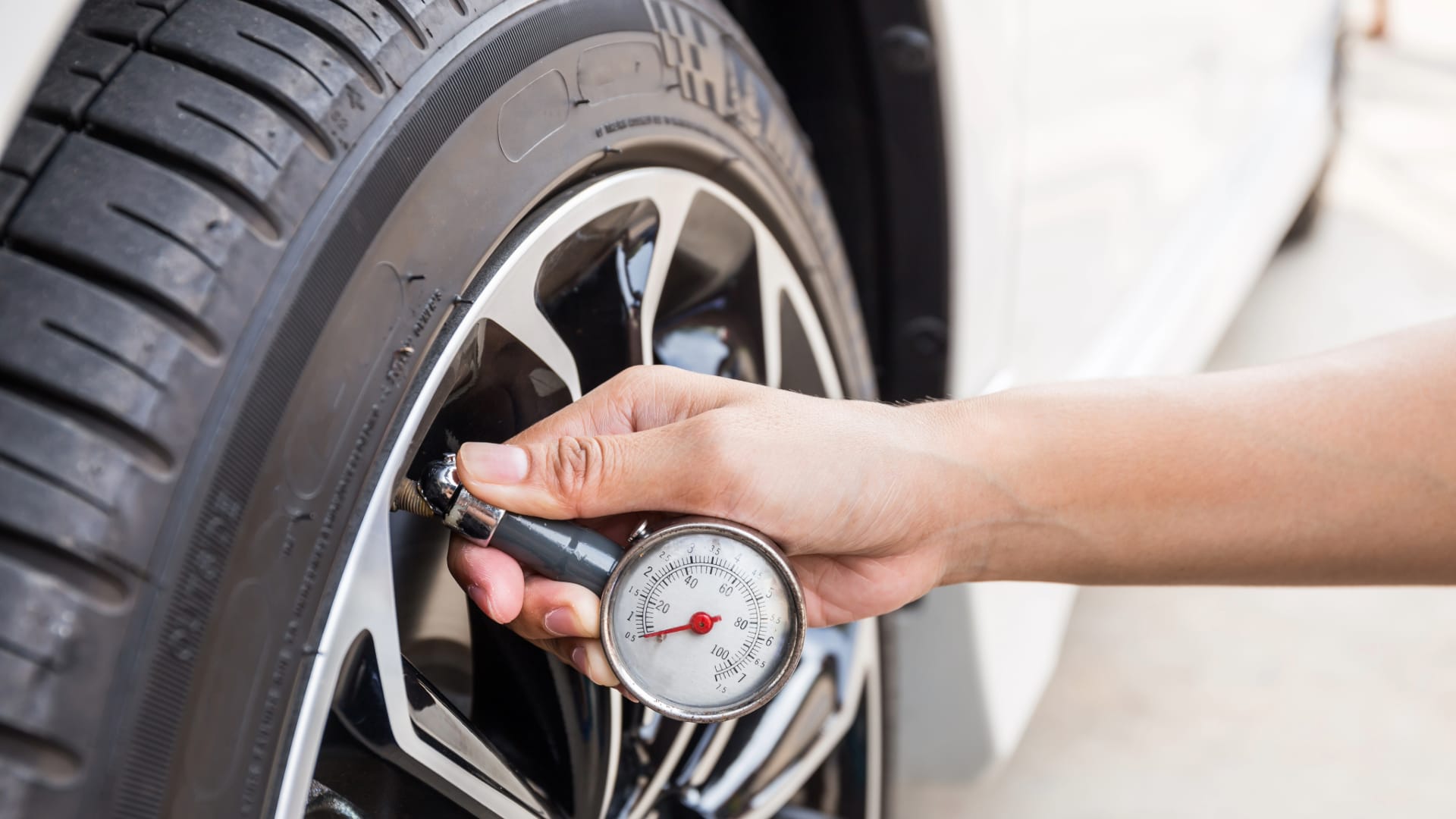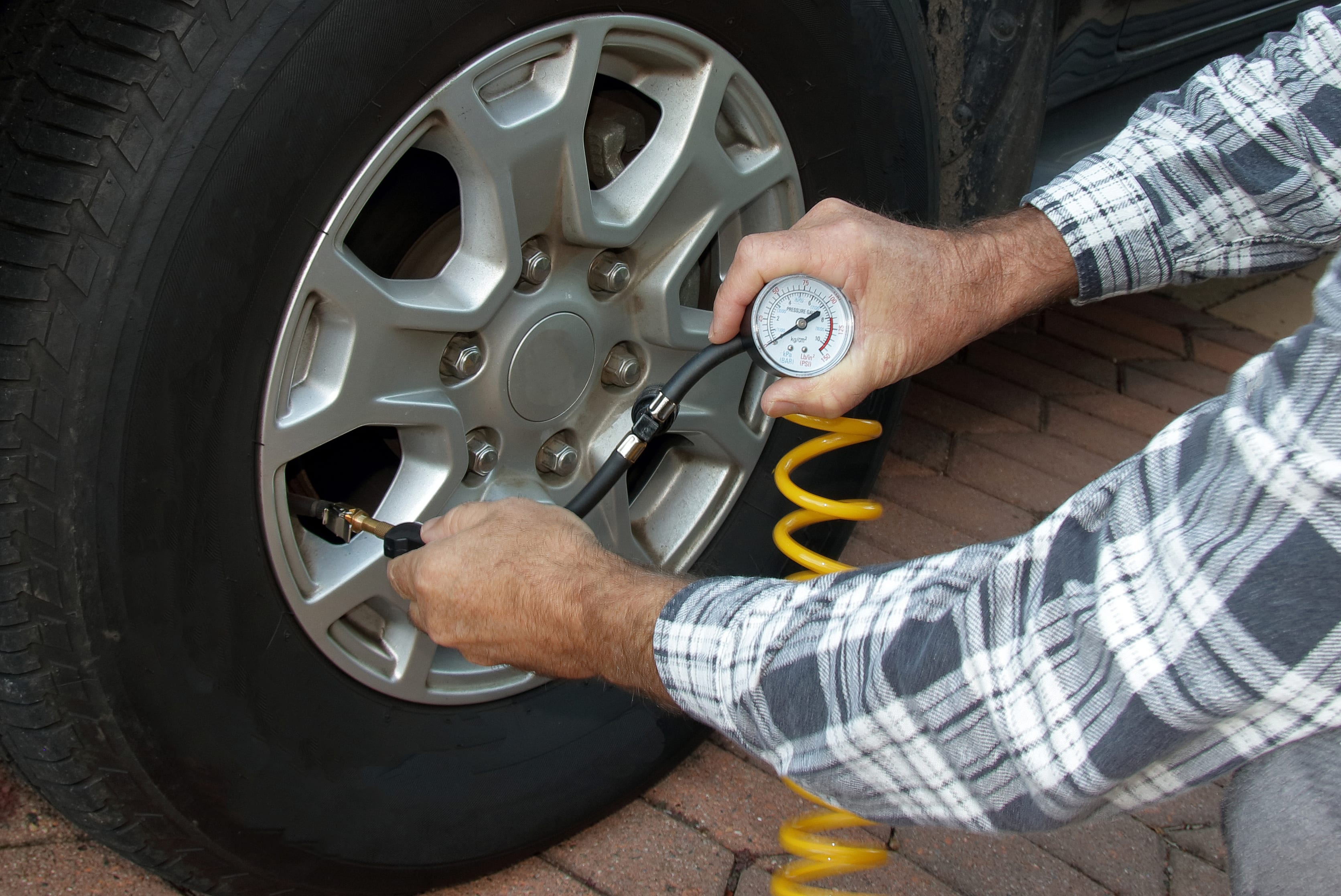Tire Maintenance & Safety
How to Put Air in Tires

Free shipping
Best price guarantee
SimpleCrew exclusive savings
0% financing options
Tire replacement coverage
24/7 roadside assistance
Easy returns
Tire Maintenance & Safety

Maintaining proper tire pressure is a critical aspect of vehicle safety and performance that is often overlooked. Neglecting to keep tires inflated to the recommended levels can lead to a host of problems, from reduced fuel efficiency to increased risk of accidents.
Checking and adjusting tire pressure regularly is a simple task that can save you money and potentially prevent dangerous situations on the road. By understanding the importance of proper tire inflation and learning how to add air to your tires when needed, you can ensure a safer, more comfortable driving experience.
In this step-by-step guide, we'll walk you through the process of checking and inflating your tires, as well as provide helpful tips on maintaining optimal tire pressure for your vehicle. Armed with this knowledge, you'll be able to confidently keep your tires in top condition, whether you're a seasoned driver or a novice behind the wheel.
Ensuring your tires are inflated to the correct pressure is essential for several reasons. First and foremost, properly inflated tires contribute to your vehicle's overall safety. Tires with the right amount of air provide better traction, handling, and braking performance, especially in adverse weather conditions. This means you'll have more control over your vehicle, reducing the risk of accidents.
In addition to safety benefits, maintaining proper tire pressure can also improve your vehicle's fuel efficiency. Underinflated tires create more resistance on the road, causing your engine to work harder and consume more fuel. By keeping your tires inflated to the recommended levels, you can optimize your vehicle's performance and save money on gas in the long run.
Moreover, properly inflated tires wear more evenly and last longer. When tires are underinflated, the sidewalls flex more than they should, leading to increased heat buildup and potential damage. This uneven wear can cause your tires to deteriorate more quickly, forcing you to replace them sooner than necessary. On the other hand, overinflated tires can also cause problems, such as a harsher ride and increased vulnerability to road hazards like potholes.
To avoid these issues and extend the life of your tires, it's crucial to check your tire pressure regularly—at least once a month and before long trips. This simple maintenance task can help you catch any potential problems early on, saving you time and money in the long run. Plus, with the convenience of online retailers like SimpleTire, it's easier than ever to find the right tires for your vehicle when the time comes for a replacement.

Checking your tire pressure is a quick and easy process that requires only a few tools. Here's what you'll need:
To check your tire pressure, follow these steps:
It's a good idea to check your tire pressure monthly and before any long trips. This will help you catch any slow leaks or changes in pressure due to temperature fluctuations. By staying on top of your tire pressure, you'll ensure your vehicle is always ready to perform at its best.
When it comes to adding air to your tires, you have a few options depending on your location and available tools. Here's what you'll need:
Portable air compressors and tire inflators are handy tools to have at home, as they allow you to easily add air to your tires without making a trip to the gas station. When choosing a compressor or inflator, look for one with the following features:
With the right tools on hand, you'll be well-equipped to maintain proper tire pressure and keep your vehicle running smoothly.
If you find yourself needing to add air to your tires while on the go, most gas stations have air pumps available for use. Here's how to add air at a gas station:
Remember, it's essential to use a reliable gauge when adding air to your tires, as the gauges on gas station air pumps may not always be accurate. By following these steps and keeping a close eye on your tire pressure, you can ensure your tires are properly inflated and ready for the road ahead.
Adding air to your tires at home using a portable air compressor or tire inflator is a convenient way to maintain proper tire pressure without having to visit a gas station. Here's how to do it:
When using a portable air compressor or tire inflator, it's essential to follow the manufacturer's instructions carefully. Some compressors may have specific settings or limitations, so familiarizing yourself with your particular model's features and capabilities is crucial for safe and effective use.
By investing in a quality air compressor or tire inflator, you can easily maintain proper tire pressure at home, saving you time and money in the long run. Plus, with the convenience of online retailers like SimpleTire, it's easy to find the right tools and accessories to keep your tires in top condition.
While it's always best to use a reliable tire pressure gauge when checking and adjusting your tire pressure, there may be times when you find yourself without one. In these situations, there are a few methods you can use to estimate your tire pressure and add air if needed.
One way to roughly estimate your tire pressure is by visually inspecting your tires. A tire that appears noticeably underinflated or "squished" is likely low on air. However, it's important to note that this method is not precise and should only be used as a last resort.
Another way to estimate your tire pressure is by pressing firmly on the sidewall of the tire with your hand. A properly inflated tire should feel firm and resist compression, while an underinflated tire will feel softer and more pliable. Again, this method is not exact and should only be used when a gauge is not available.
If you find yourself needing to add air to your tires without a gauge, you can use the following method:
While these methods can help in a pinch, it's always best to use a proper tire pressure gauge when maintaining your tires. Investing in a small, portable gauge to keep in your vehicle can save you time and hassle in the long run.

To ensure your tires remain in top condition and perform at their best, it's essential to follow some best practices and maintenance tips. Here are a few key points to keep in mind:
Make it a habit to check your tire pressure at least once a month and before any long trips. This will help you catch any slow leaks or changes in pressure due to temperature fluctuations.
In addition to checking tire pressure, regularly inspect your tires for signs of wear and tear, such as uneven tread wear, cracks, bulges, or embedded objects. If you notice any issues, have your tires inspected by a professional as soon as possible.
To promote even wear and extend the life of your tires, have them rotated every 5,000 to 7,500 miles or as recommended by your vehicle's manufacturer. This helps ensure that each tire wears evenly and lasts as long as possible.
Many modern vehicles are equipped with a Tire Pressure Monitoring System (TPMS) that alerts you when one or more of your tires are significantly underinflated. If your TPMS light comes on, check your tire pressure and add air as needed.
If your vehicle has a spare tire, don't forget to check its pressure regularly as well. A flat spare tire won't do you any good in an emergency situation.
By following these best practices and staying on top of your tire maintenance, you can ensure your vehicle remains safe, efficient, and reliable for years to come. And when the time comes to replace your tires, remember that online retailers like SimpleTire offer a wide selection of high-quality tires at competitive prices, making it easy to find the perfect set for your vehicle.
Checking your tire pressure regularly is one of the most important aspects of tire maintenance. Make it a habit to check your tires at least once a month and before any long trips. This simple practice can help you catch potential issues early on, preventing more serious problems down the road.
Investing in a reliable tire pressure gauge and a portable air compressor or tire inflator can make maintaining your tires much easier and more convenient. Look for tools with easy-to-read gauges, auto shut-off features, and compact designs for easy storage.
Keep up with seasonal tire maintenance tips to ensure your tires are always ready for the road ahead. For example, during the colder months, tire pressure can drop as the temperature decreases, so it's essential to check your pressure more frequently and add air as needed.
While maintaining proper tire pressure is a simple task that most drivers can handle on their own, there may be times when it's best to seek the help of a professional. If you notice any unusual wear patterns, damage, or other issues with your tires, have them inspected by a qualified technician to ensure your safety on the road.
By following these tire maintenance tips and staying proactive about the health of your tires, you can enjoy a safer, more comfortable driving experience and potentially save money in the long run. Remember, your tires are the only point of contact between your vehicle and the road, so taking care of them should always be a top priority.
How much air you should put in your tires can be found on the driver’s side door jam. Typically, this number will be above 30 PSI and could be over 50 if you have a larger truck.
If there's no sticker on the door, you can usually find the specs in the owner's manual. Most passenger cars will recommend 32 to 35 PSI.
Search By